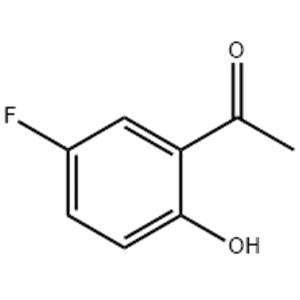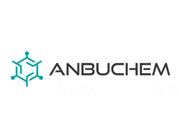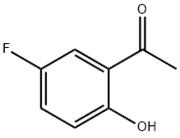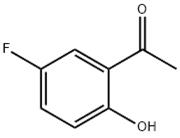Welcome to inquire. Email: sales@anbuchem.com Whatsapp: +86 18638608485
5-Propyl-1,3-benzenediol Basic information
Product Name: 5-Propyl-1,3-benzenediol
Synonyms: 5-Propyl-1,3-benzenediol;Divarinol;1,3-Benzenediol, 5-propyl-;3,5-Dihydroxypropylbenzene;1,3-Benzenediol, 5-propyl- CAS NO.500-49-2;3,5-Dihydroxy-1-propylbenzene;Divarin
CAS: 500-49-2
MF: C9H12O2
MW: 152.19
EINECS:
Product Categories:
Mol File: 500-49-2.mol
5-Propyl-1,3-benzenediol Structure
5-Propyl-1,3-benzenediol Chemical Properties
Melting point 82.8°C
Boiling point 234.66°C (rough estimate)
density 1.0505 (rough estimate)
refractive index 1.4024 (estimate)
solubility DMF: 2 mg/ml; DMSO: 2 mg/ml; Ethanol: 5 mg/ml; PBS (pH 7.2): 1 mg/ml
form A crystalline solid
pka 9.56±0.10(Predicted)
InChI InChI=1S/C9H12O2/c1-2-3-7-4-8(10)6-9(11)5-7/h4-6,10-11H,2-3H2,1H3
InChIKey FRNQLQRBNSSJBK-UHFFFAOYSA-N
SMILES C1(O)=CC(CCC)=CC(O)=C1
Safety Information
HS Code 2907290090
MSDS Information
5-Propyl-1,3-benzenediol Usage And Synthesis
Description A White to Brown crystalline solid.
Uses 5-Propylbenzene-1,3-diol is an intermediate used to prepare Cannabigerovarin (C175140) which stimulates thermosensitive transient receptor potential (TRP) channels of vanilloid type-4 (TRPV4)-mediated [Ca2+]i with moderate-high efficacy (30-60% of the effect of ionomycin) and potency (EC50 0.9-6.4 μM),
Definition ChEBI: Divarinol is a 5-alkylresorcinol in which the alkyl group is specified as propyl. It has a role as a semiochemical, a fungal metabolite, a lichen metabolite and an animal metabolite.
Synthesis In a 100 mL round bottom flask, open to the atmosphere was added the crude product Benzene, 1,3-dimethoxy-5-propyl (0.736 g, 4.08 mmol, 1.0 equiv.) and a 1:1 mixture of glacial acetic acid (20 mL, 349.7 mmol, 17.4 M) and hydrobromic acid (48% in H2O, 20 mL, 368.3 mmol, 18.4 M). The reaction mixture was refluxed at 125 °C for 3 hours while stirring, or until the starting material was consumed via TLC analysis. At this point, the reaction was allowed to cool to room temperature and quenched by the addition of DI H2O. The biphasic solution was added to a separatory funnel, wherein the organic portion was extracted Et2O (ca. 3x 20 mL). The organic layers were then combined, neutralized with a concentrated sodium bicarbonate solution (ca. 30 mL), washed with a saturated brine solution (ca. 50 mL), dried over MgSO4, filtered, and concentrated in vacuo to afford the final product without 5-Propyl-1,3-benzenediol (0.609 g, 99% yield) as a pale yellow oil.
500-49-2.png
Solubility in organics 5-Propyl-1,3-benzenediol is soluble in N,N-dimethylformamide, soluble in methanol, slightly soluble in glacial acetic acid, very slightly soluble in chloroform, almost insoluble in water.
5-Propyl-1,3-benzenediol Preparation Products And Raw materials
Raw materials 1-(3,5-dimethoxyphenyl)propan-1-one-->Benzeneethanol, 3,5-dimethoxy-α-methyl--->1,3-Benzenediol, 5-(2-propen-1-yl)--->1-(3,5-dimethoxyphenyl)propan-1-ol-->1,3-dimethoxy-5-propylbenzene-->Ethyl divarinolcarboxylate-->2-Hydroxy-4-oxo-6-propyl-2-cyclohexene-1-carboxylic Acid Methyl Ester-->ETHYL 3,5-DIMETHOXYBENZOATE-->3,5-Dimethoxybenzyl alcohol-->1-Bromo-3,5-dimethoxybenzene-->3,5-Dimethoxybenzoic acid-->3,5-DIMETHOXYBENZOYL CHLORIDE-->3,5-Dimethoxybenzaldehyde
Preparation Products (+)-2-Methyl-2-(4-methyl-3-pentenyl)-7-propyl-2H-1-benzopyran-5-ol


 China
China

